“Falling Towers”:
T.S. Eliot, the Decline of the West
and the Doctrine of the Incarnation
I
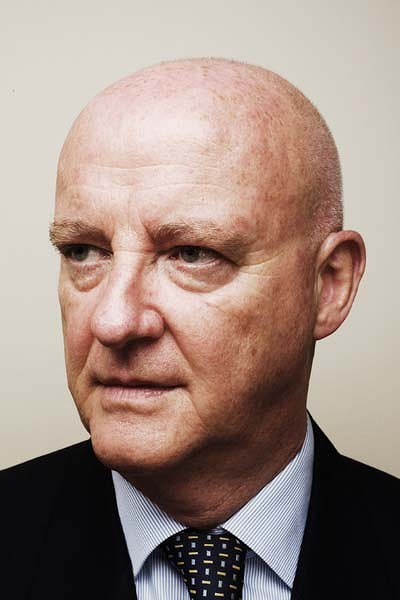
Prof. Barry Spurr.
Central to T.S. Eliot’s Anglo-Catholic faith and practice, which he pursued from the time of his Baptism and Confirmation in the Church of England in 1927 until his death in 1965, was his focus, theologically and poetically, on two crucial doctrines of orthodox Christianity: that of Original Sin and the Incarnation.1 As readers of his poetry know, Eliot had a generally low (some would say, realistic) view of human nature and, especially in his early works (such as those in the collection, Prufrock and Other Observations, published in 1917, and The Waste Land of 1922), the poet presents both individual lives and the decline of the West at large in memorable characterisations and telling imagery. These have become classic expressions of the experience of cultural, intellectual and spiritual turmoil and despair, dating from the time of the First World War.
Eliot’s J. Alfred Prufrock, whose ironically-entitled “Love Song” explores the anxieties and failures – intellectual, emotional and sexual – of the urban, middle-aged man of modernity who has “measured out” his life “with coffee spoons”, closes his monologue hauntingly in a lyrical scenario of fantasy-escape from the waking nightmare of his existence. But the last line of the poem has a final twist of the knife (as Eliot elsewhere describes the realisation of the dismal diurnal routine of human life):
We have lingered in the chambers of the sea
By sea-girls wreathed with seaweed red and brown
Till human voices wake us, and we drown.2
And the very title of The Waste Land has passed into common currency to encapsulate the apprehension of unrelieved and irredeemable hopelessness experienced by individuals in their own lives, as well as in community, nationally and in Western civilisation itself.
Extraordinarily, while Eliot’s poetry of this early period of his creativity is now a century old, it still speaks with immediacy to the unravelling of Western culture in our time – indeed, even more tellingly so today than in the past, as the processes of decay and degradation he envisaged now seem complete and, what is worse, irreversible. Most succinctly, at the end of “The Hollow Men” (1925), after the fragmentation of the Lord’s Prayer (“For Thine is / Life is / For Thine is the” – symbolising the breaking-down of religious discourse and its consolations – we are told: “This is the way the world ends / Not with a bang but a whimper.”3
The hollow men of that poem’s title join the procession of Prufrock-like figures (as does Eliot’s Gerontion in the eponymous poem of 1920), isolated and despairing, bereft of an integrated culture, civilisation and – for Eliot, most importantly – a religion, which is an intrinsic part of any culture or civilisation worthy of the name:
No culture has appeared or developed except together with a religion… The culture being, essentially, the incarnation (so to speak) of the religion of a people… There is an aspect in which we can see a religion as the whole way of life of a people from birth to the grave, from morning to night and even in sleep, and that way of life is also its culture.4
For Western Europe and England (for which, naturally, he was particularly concerned, having taken British citizenship in 1927) Eliot noted repeatedly a cultural deterioration, through the twentieth century – a process of the destruction of
our ancient edifices to make ready the ground upon which the barbarian nomads of the future will encamp in their mechanised caravans.5
In his most sweeping survey of the rise and fall of civilisations, in The Waste Land, Eliot interprets the decline of the West in the twentieth century in terms of a cyclic sequence of cultural development and concentration, and then decline and destruction, dating from antiquity to modernity. The lack of punctuation, here, conveys the sense of an endless process:
Falling towers
Jerusalem Athens Alexandria
Vienna London6
II
The poems from Eliot’s pre-Christian years, devoted to confronting and delineating this decay in both personal and societal manifestations, deconstruct the Romantic view of human life which had held sway for a century but which was dealt its final and most decisive death-blow in the carnage of the Great War. How could the ideas (and such as the heroic ideal) of the Romantic interpretation of humanity and its history be sustained in the face of the unspeakable reality of the Somme? That the writing of several of Eliot’s best-known early poems (such as “Prufrock”) pre-dates the war shows, again, his prescience in anticipating the direction in which Western civilisation was fatally trending to the point of the nadir of its disillusionment with Romanticism in that bloody conflict and its aftermath. This fragmentation of a civilisation required new voices and modes of expression in literature (as in the other arts) to give embodiment to the new world that was so brutally coming into being. In this way, Eliot appreciated Igor Stravinsky’s music, for example, and said of The Rite of Spring (1913) that it transposed
the rhythm of the steppes into the scream of the motor horn, the rattle of machinery, the grind of wheels, the beating of iron and steel, the roar of the underground railway, and the other barbaric cries of modern life; and… transform[ed] these despairing noises into music.7
No doctrine of Christianity is more central to the critique of the Romantic interpretation of human existence than that of Original Sin, what John Henry Newman called the “terrible aboriginal calamity” in which “the human race is implicated”.8 Brought up in the most Romantic of Christian pseudo-creeds, Unitarianism – “the most ‘liberal’ of ‘Christian’ creeds”, as he dismissively described it9 – Eliot, in early adulthood, rejected its life-affirming convictions, for a confrontation with the reality of human existence in the present and, particularly, as experienced in the metropolis and by its denizens. Anything less Romantic it was difficult to imagine.
London – then the largest city in the world and the leading city of the greatest empire it had known – is the principal setting of The Waste Land but the metropolis and its inhabitants are seen not in imperial glory but in a devastatingly frank realism, conveyed in an arresting sequence of poetic images and symbols, and, ironically, by an intermittently mellifluous lyrical and incantatory voice. As in Stravinsky’s Rite, Eliot turns these despairing intimations into a new music – of poetry. James Joyce’s Ulysses, set in Dublin, with a similar brief to reveal the often-squalid truth about urban existence in the early twentieth century in that city, was published in the same year. 1922 was indeed the annus mirabilis of literary Modernism. And the language of Ulysses, too, has a strange beauty – as in Molly Bloom’s soliloquy – emerging from the decay and detritus, physical and spiritual.
Every aspect of the wastelanders’ lives, it seems, is touched by life-denying negativity (and not so much by an energetic sinfulness, that might at least speak of liveliness but an enveloping torpor), conveying the sense of what Eliot was coming to understand, theologically, as the multi-faceted sinfulness of the human condition. His Dantean image of the crowd surging over London Bridge into the City for the day’s work conveys the soullessness of the modern inferno:
Under the brown fog of a winter dawn,
A crowd flowed over London Bridge, so many,
I had not thought death had undone so many.
Sighs, short and infrequent, were exhaled,
And each man fixed his eyes before his feet…10
Eliot’s lengthy study of philosophy and Eastern religions at Harvard in the first decades of the twentieth century was a process of searching for a system of belief that would give meaning to his own life and offer an explanation of and even redemption from the meaninglessness and hopelessness of human existence, as he perceived it, at large.
Each of the five sections of the poem particularises and details different kinds of deaths – of Europe, after the war; of romance, especially in the failure of men and women to communicate, let alone act upon, their feelings; of London, as a centre of global power and mercantilism; and of religion and its neglected assurances: “There is the empty chapel, only the wind’s home.”11 Using an epic method and the Wagnerian technique of the leitmotif, Eliot works by forecast and recollection, intensifying each of these failures – on their personal and cultural levels. Underpinning and uniting the whole enterprise are two of the great stories of Western Christendom: the passion and death of Christ, and the search for the Holy Grail (containing Christ’s blood from his crucifixion). In both cases, tradition proposes a positive outcome: resurrection and the attainment of the Grail. In The Waste Land, however, both are denied. At the end of the poem, three commands are issued to the wastelanders: to give, to sympathise and to control. The attainment of the Grail and resurrection to new life depend upon a positive response to these. But, in each case, it is the failure to rise to these occasions that is registered. (This is utterly unsurprising – everything that has gone before in The Waste Land has been leading to this denouement). The wasted land is not revived, and the poem closes in a nightmarish confusion of tongues – fragments of a fragmented civilisation – as even the possibility of communicating in poetry some kind of meaning is denied in a culture that is falling apart. “These fragments”, Eliot writes, “I have shored against my ruins.”12 The irony, of course, is that Eliot had forged a creative language and a fertile body of imagery that could express the disillusionment of a generation.
III
The second period of the poet’s life and creativity, dating from 1927, may be described as his ‘Christian’ period, but one has to be careful in the use of that adjective. In his personal life, he was a devout and observant Anglo-Catholic through these decades, conspicuously devoted to the sacramental and liturgical practices and disciplines of the Church in the familiar Anglo-Catholic way. But in Eliot’s poetry the continuity with his interpretation of the sinful character of human lives and the failure of Western civilisation to remain true to its history and traditions and to defend the institutions which had sustained it through the centuries, is more striking than any breach with that essentially negative assessment.
What is different, however, is that the emphasis on Original Sin and its consequences in personal and social life is now balanced with a sense of the possibility of redemption from that hopeless condition. But the reason why we need to be cautious in applying the term ‘Christian’ to poems where this note of salvation is heard, is that such moments of consolation, amelioration of suffering and transcendent glimpses of the beatific vision are (in Eliot’s own phrase) just “hints and guesses” of that salvific dispensation.13 ‘Christian poetry’, on the other hand, implies assurance; promises some doctrinal didacticism, and probably has the intention of converting its readers. Eliot’s poetry from 1927 onwards has little of the first, some of the second and virtually nothing of the third.
The poet’s sense of the difficulty of the Christian way in the modern world is pervasive from his first ‘Christian’ poem, “Journey of the Magi.”14 Here, Eliot takes as his subject the Biblical story of the pilgrimage of the wise men to the Christ child, but he modernises it and reverses it. The worldly-wise men of today who have abandoned Christianity, must rediscover its central truth, as represented by the Holy Infant, in the Incarnation, the feast of the birth of Christ. En route, travelling backwards through time, they will endure the scenes of Christ’s passion and death which Eliot captures in a series of images from the scriptural narrative. The “three trees on the low sky”, for example, represent Calvary. This makes the journey more difficult for the modern pilgrims (as opposed to the original Wise Men of the charming biblical story) as they must pass through the fullness of Christ’s life, including his suffering and death for the sins of the world. Yet their recognition of the significance of what they are experiencing is partial. They are far removed from an understanding of the implications of all they are seeing, and Eliot conveys this tellingly by oblique references to such as the Passion story: “feet kicking the empty wine skins”, for example, suggesting (but not explicitly naming) the scourging of Christ.
Yet the poem is not without a striking development beyond the sin-laden world of Eliot’s previous poems and of the Magi’s usual domain. They encounter “a temperate valley.” This is a very significant moment in Eliot’s corpus, in stark contrast with the wasteland, from which even the sound of water was absent. Now there is “a running stream and a water-mill beating the darkness.” The language is richly symbolic; the water being representative of purification and the sacrament of baptism, and that beating of the darkness suggests the overcoming of the valley of the shadow of death, with its association with the consequences of sin.
For all this, “Journey of the Magi” is at best an ambiguous work. When the Magi arrive at the end of their journey (usually a cause for celebration and, in this case, one would have thought, for much rejoicing), they simply say of “the place” (not even naming Bethlehem), and the event there:
it was (you may say) satisfactory.
The reason for this bland diction is that the modern Wise Men, although having reached their destination, find the implications of the Incarnation disturbing rather than exhilarating. They realise the difficulty of what lies before them: their responsibility to act upon what they have seen. But commentators, puzzling over this line, have usually failed to recognise that the bland, prosaic word is, as well, a technical term from theology. Eliot is pointing out that the birth of Christ and his sacrificial death are a “satisfaction” for sin. That is, the process initiated by the Incarnation and completed in the Resurrection is sufficient for redemption. So the prosaic statement is also a very positive affirmation, even if the Magi are not fully aware of what they are saying.
In the closing verse paragraph, the singular and more personal voice of one Magus is still trying, years later, to come to terms with what he has experienced. This is true to Eliot’s repeated insistence that, especially in the modern secular world, trying to believe and practice the Christian faith is a constant struggle. The Damascus-road type of experience often associated with conversion aroused his suspicion. He had no time, for example, for the kind of decision for Christ that people were coming to at the Billy Graham Crusade rallies in Britain in the 1950s. Indeed, he understood that a strong strain of scepticism in matters of faith, so far from being disabling, was a healthy – and inevitable – component in the vigorous religious life and pilgrimage of a thinking person in the modern world.
At the end of the poem, the solitary Magus notes that he is “no longer at ease here, in the old dispensation.” This is witty, in accord with the temporal reversal of the work at large. Usually, “the old dispensation” refers to the Jewish religion, prior to Christ’s advent. Now, this superannuated domain is our present, post-Christian, modern world, which the Magus (given the experience he has had) finds unsatisfying, with “an alien people clutching their gods.” “I should be glad of another death”, he says – a further dying from worldliness to Christ.
Such a contingent, open-ended ending is typical of Eliot’s religious poetry – looking forward to a consummation yet to be experienced and with a scepticism that ensures that it will never be fully comprehended in this world. By no means is this a counsel of despair. As Eliot was to write some years later in the third of the Four Quartets, “The Dry Salvages”, we must be active in the pursuit of such transcendental knowledge and experience: in “prayer, observance, discipline, thought and action”15 and he urges, in the following poem, “Little Gidding”, “we shall not cease from exploration.”16
IV
Following immediately after “Journey of the Magi” is the longer work, Ash-Wednesday, 1930, to give it its full title. This is a Lenten poem in which Eliot’s personal focus on sinfulness, the need to confront it, the availability of absolution from it and the sense of beatific happiness that that can bring is most extensively explored.17 It is also his most liturgical poem and it is arguably the greatest Marian poem – due to the way the presence of the Virgin Mary pervades it – of the twentieth century.18 Eliot’s anti-Romanticism eschewed the expression of personal experience, so while we notice the repeated use of the first-person pronoun in Ash-Wednesday, we should read this presence in terms of a more generalised poetic speaker, referring beyond the poet’s individual sense of sin and suffering and his desire for expiation to a larger meditation on how such an experience arises, is processed and resolved within the context of the sacramental life and the operation of grace.
As always, Eliot does not diminish the difficulty of the spiritual life for modern men and women in the post-Christian secular world of contemporary Western civilisation. In the poem’s first section, his speaker, punctuating his language with negativity, seems distinctly not receptive to the desire for spiritual renewal which Ash Wednesday and the penitential season of Lent, which it introduces, are designed to stir: “I no longer strive to strive towards such things”; “I rejoice that things are as they are and / I renounce the blessed face.” The irony of these statements, and there are several more of this kind, is that within their very negativity lurk intimations of a positive possibility: that he has the capacity for rejoicing, and that there indeed exists a blessed face to be renounced. Moreover, “I pray that I may forget / These matters that with myself I too much discuss / Too much explain.” Prayer is a possibility.
What we see is that Eliot is submitting himself to the discipline of self-emptying of the via negativa – the spiritual practice of utter self-renunciation (even of hope), in order to initiate the process of being filled with new life. And the first section closes with a portion of the Ave Maria prayer, at the conclusion of which the Virgin is asked to “pray for us sinners now and at the hour of our death.” We note here that the language of the poem has opened out from the personal to the plural (“us sinners”), and it moves between these points of reference as it proceeds. But most tellingly, and for the first time in his corpus, Eliot brings into his verse through the quotation from a petition to the Virgin, a female presence who is redemptive and, as her influence grows through the poem, she becomes alluring and consoling too. What a sharp contrast she presents with the procession of problematic women who have populated Eliot’s poetry up to this point!
By the middle of the poem, in its third section, we have advanced beyond the bare bones to which the speaker has been reduced – a spiritual renunciation of worldliness and the flesh (the Magus’s “old dispensation”) which he has willingly embraced – and an extended metaphor of a stairway of ascent is developed (in Section III), as the Pauline “old man” of sin is left behind, and the tantalising pagan scene is, although with more difficulty, rejected, as he glimpses it through “a slotted window bellied like the fig’s fruit” (itself an imagery rich with sensual appeal and distraction).
What Eliot is affirming here, in addition to the difficulty of ascent, is the necessity of such disciplines in the personal life. This, again, sounds the note of anti-Romanticism in his work and the contrasting ‘classical’ temper that he constantly affirmed: the discarding of the personal and subjective, for the impersonal and the objective. For Eliot, the truly civilised individual not only recognised but willingly submitted to traditions and institutions beyond himself, and to the time- and custom-honoured truths they embody. In the twentieth century, such a mindset was most powerfully challenged in the 1960s – a neo-Romantic revolution committed to affirming the individual, and decrying and destroying all institutions and external authorities which allegedly were inhibiting its flourishing. Contemporary Western society ever since has been reaping the results and paying the price of that revolution.
Eliot does not utterly discount individuality. Perhaps his most famous literary-critical essay has the title “Tradition and the Individual Talent.” But what he argues there is that that talent is best nurtured in the context of “the tradition” (in this case, of the Western literary canon). The brilliant mind adds to the tradition – as Eliot himself did – and alters it, accordingly, by that addition. But the tradition is not discarded. The canon is not set in ossified stone, as its critics constantly claim, but ever-evolving. It is ever-amplified by individual talents. This is the genuine conservative understanding of creativity, and thought at large.
In the closing sections of Ash-Wednesday, by which time the sequence has moved from the beginning of Lent to its end in Holy Week, the possibility of redemption from the sins of the world and of the beatific vision are glimpsed. These transcendent ideas are beautifully mediated in the epiphany of a female form, with
With white light folded, sheathed about her, folded.
The new years walk, restoring
Through a bright cloud of tears, the years, restoring
With a new verse the ancient rhyme.
That literary reference is completely to the Modernist point: the ancient rhyme embodying the old truths of the faith is not discarded but re-animated, with a new language. As always, Eliot does not shrink from the difficulty of faith or the almost-impossible challenge of expressing its beliefs and disciplines in a new voice to a sceptical age. So the poem closes in “the time of tension between dying and birth” – dying to this world and being re-born in Christ and in a prayer of submission to the female figure who has evolved throughout Ash-Wednesday into a composite image of a Dante’s Beatrice, a religious sister and the Virgin Mother herself:
Blessed sister, holy mother, spirit of the fountain, spirit of the garden,
Suffer us not to mock ourselves with falsehood
Teach us to care and not to care
Teach us to still still
Even among these rocks
Our peace in His will.
V
The most extensive celebration of the doctrine of the Incarnation in Eliot’s work and, arguably, in twentieth-century poetry at large, is Four Quartets, the poet’s final masterwork, completed during the Second World War. The four poems, gathered together, can be read and interpreted on several levels (including musically, as the title invites) and, in the course of them, Eliot focuses on the four elements (air, earth, water and, surprisingly, pentecostal fire, which is renewing rather than consuming) and the four seasons of the year, Spring, Summer, Autumn and then, again surprisingly, Midwinter Spring – a literary and theological season, as it were, which is the culmination of the incarnational theme of the work. Christmas, in the northern hemisphere, was often construed in these terms: springtime in the heart of wintertime; “the unimaginable / Zero summer”19 – summertime at freezing point.
Through the poems, the principal metaphor for the Incarnation emerges as “the still point of the turning world”, introduced in the first Quartet, “Burnt Norton.”20 Four Quartets is a meditation on time and timelessness and, in its focus on the Incarnation, concentrates on the intersection of the timeless with time. Although reacting against the Romantic movement in thought and poetry, as we have argued, Eliot nonetheless provides, in the Quartets, some beautiful passages of the description of the natural world (a favourite subject of Romantic poetry) where the transcendental experience of the still point can be known. For example, in these lines in the second Quartet, “East Coker”:
So the darkness shall be the light, and the stillness the dancing.
Whisper of running streams, and winter lightning.
The wild thyme unseen and the wild strawberry,
The laughter in the garden…21
But it is in the third Quartet, “The Dry Salvages” – the poem of water (recalling Eliot’s childhood by the Mississippi in St Louis and his youth sailing off the Massachusetts coast) – that he explicitly refers to the theological doctrine itself with regard to such brief moments of epiphany when we discern the intersection of timelessness with time. It is like “a distraction fit”, by the standards of our ordinary, mortal preoccupations, and it can come upon us unbidden, as we lose ourselves “in a shaft of sunlight”; or we find that we know it in music, which is
¶¶¶¶¶¶¶heard so deeply
That it is not heard at all, but you are the music
While the music lasts.
All of these are signs of the fullness of the doctrine, named for the first and only time in his work:
These are only hints and guesses,
Hints followed by guesses…
The hint half guessed, the gift half understood, is Incarnation.22
As in Eliot’s earliest poems, there is no avoiding the sinful reality of modern life in Four Quartets – an apprehension that was heightened, obviously, at the time of their writing and the last of them, “Little Gidding”, published in 1942, includes a section on the London Blitz. The degraded condition of the wastelanders of the debauched West, as represented by contemporary Londoners, remains vividly before us:
Eructation of unhealthy souls
Into the faded air, the torpid
Driven on the wind that sweeps the gloomy hills of London.
Hampstead and Clerkenwell, Campden and Putney,
Highgate, Primrose and Ludgate. Not here,
Not here the darkness, in this twittering world.23
The absent “darkness” to which he refers (as opposed to the darkness of sin) is, again, the via negativa, and especially as explored by the mystic, St John of the Cross in the concept of the Dark Night of the Soul, whereby all earthly attachments are abandoned, and a radical discipline of self-emptying awaits the grace and love of God. How prescient again of our own time is the poet’s reference in these lines to “this twittering world”!
The balance of the poetry, however, and certainly in “Little Gidding” at the end of the sequence, is on the positive interpretation of life for offering the possibility of “timeless moments” in time. In that Quartet, we find the poet in the little chapel in Huntingdonshire which was the centre of an Anglican religious community in the early seventeenth century:
¶¶¶¶¶¶¶while the light fails
On a winter’s afternoon, in a secluded chapel
History is now and England.24
That place of retreat and prayer, lost (one would have supposed) in historical time and geographical obscurity, becomes, in the blessed present, a place of renewal for the pilgrim:
¶¶¶¶¶¶¶You are here to kneel
Where prayer has been valid…
Here, the intersection of the timeless moment
Is England and nowhere. Never and always.25
Eliot does not underestimate the urgency, or the fleeting quality, or the cost of such experience:
Quick now, here, now, always –
A condition of complete simplicity
(Costing not less than everything)
And all shall we well and
All manner of thing shall be well.26
But nothing less than the redemption of the individual and of Western civilisation at large, depends on it, as Eliot reflected in 1931:
The World is trying the experiment of attempting to form a civilized but non-Christian mentality. The experiment will fail; but we must be very patient in awaiting its collapse; meanwhile redeeming the time: so that the Faith may be preserved alive through the dark ages before us; to renew and rebuild civilization, and save the World from suicide.27
– Barry Spurr was educated at Canberra Grammar School and the Universities of Sydney and Oxford. He was a member of the Department of English at the University of Sydney for forty years and was Australia’s first Professor of Poetry and Poetics. Professor Spurr’s numerous books and other publications cover the fields of literature, and theological and liturgical aspects of it, from the Renaissance to contemporary poetry. His best known monographs are Studying Poetry (Palgrave Macmillan, 2006) which is now in its second edition, See the Virgin Blest: Representations of the Virgin Mary in English Poetry (Palgrave Macmillan, 2007) and, most recently, ‘Anglo-Catholic in Religion’: T.S. Eliot and Christianity (Lutterworth, 2010).
Endnotes
- For a full account of the genesis and development of Eliot’s Christianity and its impact on his thought and writing, see my ‘Anglo-Catholic in Religion’: T.S. and Christianity (Cambridge: Lutterworth, 2010).
- “The Love Song of J. Alfred Prufrock”, in The Complete Poems and Plays of T.S. Eliot (London: Faber and Faber, 1969), p. 17. “The last twist of the knife” closes Eliot’s “Rhapsody on a Windy Night”, op. cit. p. 26.
- Ibid., p. 86.
- Notes towards the Definition of Culture (London: Faber and Faber, 1952 [1948]), pp. 15, 18, 31 (Eliot’s emphasis).
- Ibid., p. 108.
- The Complete Poems and Plays of T.S. Eliot, p. 73.
- T. S. Eliot, “London Letter“, The Dial (New York) Vol. 71 No. 4 (October 1921) p. 452.
- John Henry Newman, Apologia Pro Vita Sua (New York: Cosimo, 2007 [1908]) p. 158.
- Letter to John Middleton Murry, 29 August 1925, in J.D. Margolis, T. S. Eliot’s Intellectual Development 1922-1939 (Chicago: The University of Chicago Press, 1972), p. 62, n. 56.
- The Complete Poems and Plays of T.S. Eliot, p. 62.
- Ibid., p. 73.
- Ibid., p. 75.
- The phrase appears in the third of the Four Quartets, “The Dry Salvages”, ibid., p. 190.
- The Complete Poems and Plays of T.S. Eliot, pp. 103-4.
- Ibid., p. 190.
- Ibid., p. 197.
- Ibid., pp. 89-99.
- For a detailed discussion of the work in the context of Marian poetry, see my See the Virgin Blest: Representations of the Virgin Mary in English Poetry (New York: Palgrave Macmillan, 2007), pp. 177-182.
- The Complete Poems and Plays of T. S. Eliot, p. 191.
- Ibid., p. 173.
- Ibid., p. 180.
- Ibid., p. 190.
- Ibid., p. 174.
- Ibid., p. 197.
- Ibid., p. 192.
- Ibid., p. 198.
- “Thoughts after Lambeth”, Selected Essays (London: Faber and Faber, 1951 [1932]), p. 387.
Citation Style:
This article is to be cited according to the following convention:
Barry Spurr, “‘Falling towers’: T.S. Eliot, the decline of the West and the doctrine of the Incarnation” SydneyTrads – Weblog of the Sydney Traditionalist Forum (30 April 2016) <sydneytrads.com/2016/04/30/2016-symposium-barry-spurr> (accessed [date]).
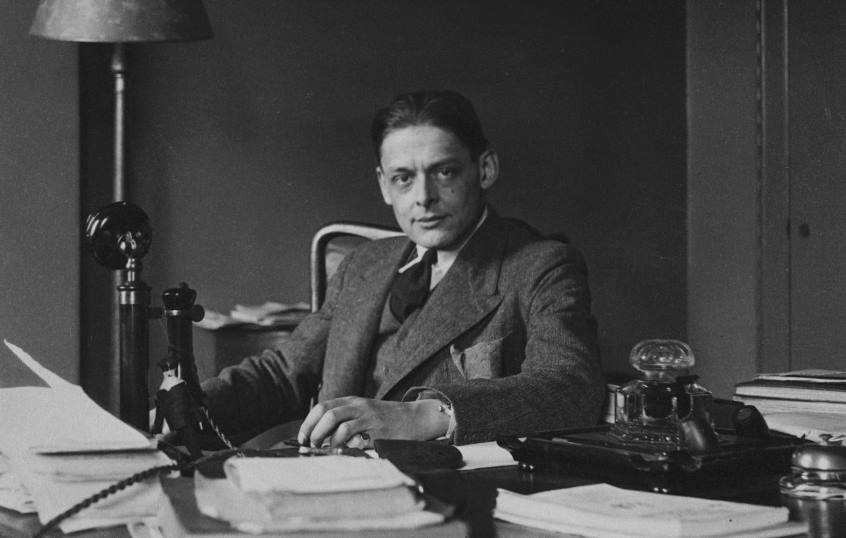
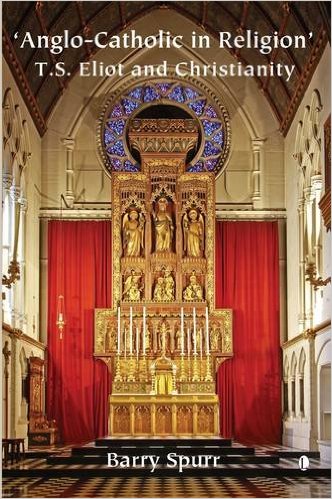
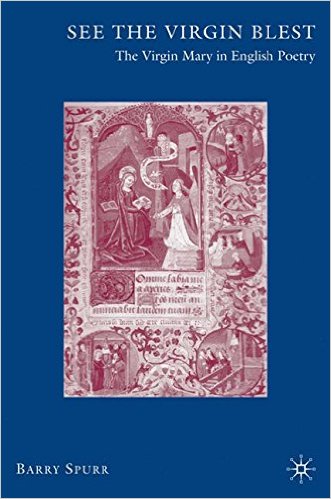
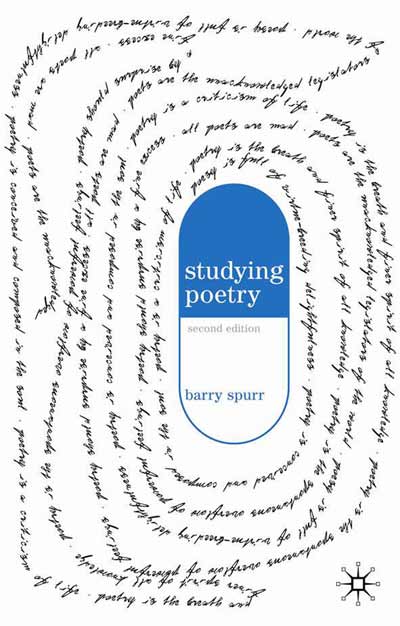
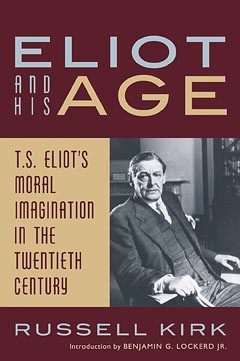
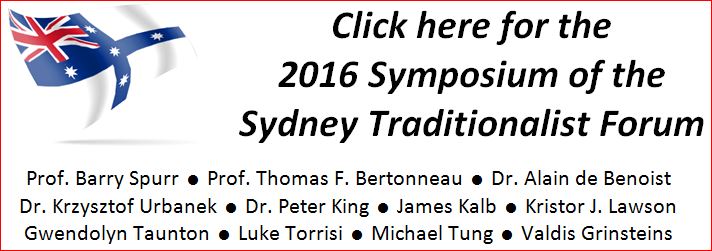
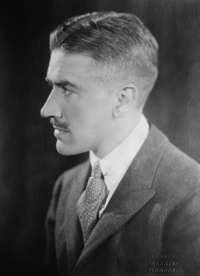
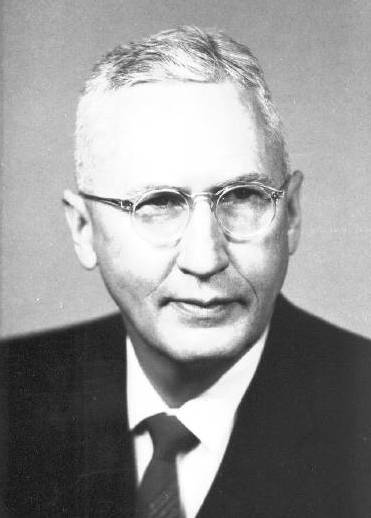
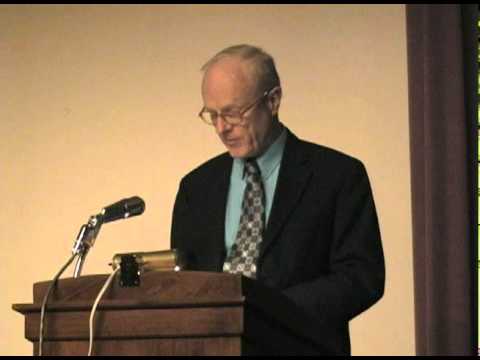
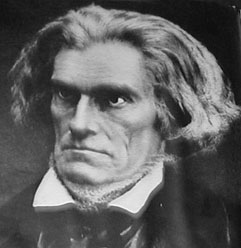
Dear Professor Spurr: Thank you for your essay. If I lived in your part of the world, I would invite you out for beer this evening. A peculiarity of modernity is that it has been accompanied by its own critique since the coevals Descartes and Pascal – the former being the radical innovator and the latter the visionary traditionalist. Modernity has never heeded the critique and is currently in a state of actively suppressing it. Too bad, too, because the critique has been clear-sighted; it has made predictions that subsequent events have borne out, and in this sense has been empirically tested. I wonder what your prognosis might be? Will modernity ever heed its critiques? What must happen for it to do so? And supposing that it doesn’t (which is its record thus far), what shapes do you discern in the prospect of the next one, two, or three decades?
Sincerely,
Thomas F. Bertonneau
Dear Professor Bertonneau,
Thank you for your response. The beer would be much appreciated! It appears to be the lesson of history that contemporaneity/modernity will not take heed of those very lessons and, especially, will not listen to the prophets of its own times who, like Eliot during the twentieth-century meltdown of civilization, have studied and pondered history and human affairs through the ages. I have a very negative view of the future, especially for Western Europe and those societies and cultures, such as Australia’s, which were built on that disseminated heritage. The Judeo-Christian tradition is now being trashed on every side and even and especially within those very places, the universities (which derive from that tradition), where one might have hoped that it would be defended and safeguarded. Of course, this is not a new insight. Many have written at length about it, but their warnings are either ignored or decried.
With best wishes,
Barry Spurr
Dear Professor Spurr,
Thank you for the insightful analysis. I have read your book on T.S. Eliot and enjoyed it immensely.
Just out of curiosity, which authors do you believe are keeping the conservative tradition (in the vein of Eliot) alive in literary circles today? I can think of Roger Scruton, Les Murray, among a handful of others.
Regards,
D.
Dear ‘D’,
Thank you for your kind comments. Authors who are keeping that tradition alive are few and far between today and, of course, are automatically villified for not conforming to the ‘correct’ views – most scandalously, nowadays, in universities (of all places). As you suggest, Roger Scruton is an excellent example of a writer who won’t be quelled by the dictatorship of political correctness. Charles Taylor is another. I live in hope that there will be a backlash against this totalitarianism, but it would be foolish to imagine that it will be soon.
The Left position is now the orthodox one, in so many domains, and, of course, the enforcing of it, and the censuring and censoring of any dissent from it by the Thought Police and the Empire of Outrage (facilitated by the Internet and anti-social media) have proved mightily effective.
Best wishes,
Barry Spurr
There is a backlash. It’s called the alt-right.